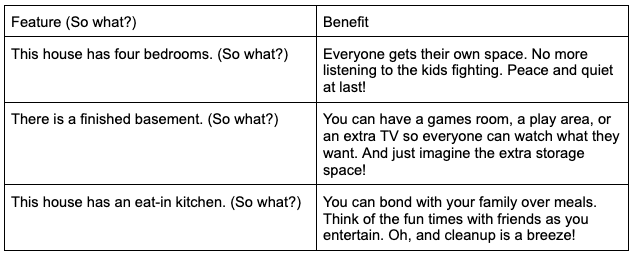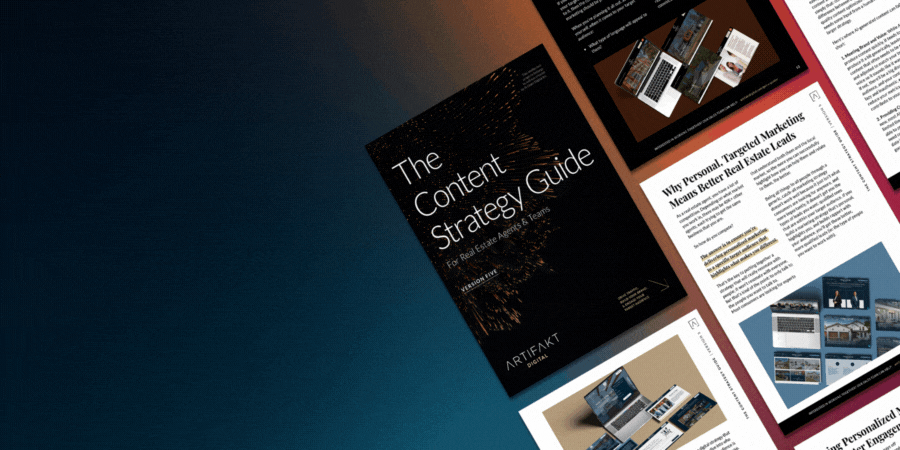What springs to mind when you think of copywriting?
You may imagine a creative person tapping away at the keyboard, coming up with catchy slogans and one-liners.
But what happens if you’re not the creative type?
Don’t worry. By the time you’re finished reading this, you’ll have a much better understanding of what great copy is and isn’t. You may even feel inspired to sit down and start cranking out a sales message or two.
Copywriting is the part of your marketing strategy that involves words.
To clearly illustrate precisely what copy is and how to create it, let’s start with a quick story.
The year was 1904.
A 40-something man waltzed in unannounced to an ad agency and handed a note to the receptionist, asking her to deliver it to one of the higher-ups. The letter ended up in the hands of Albert Lasker, who would one day become the head of the agency.
On this day, however, young Albert was just a junior employee. He stared at the handwritten message, transfixed and intrigued.
The letter said, “I am downstairs. I can tell you what advertising is. I know you don’t know. If you wish to know what advertising is, send the word “yes” down by the bell boy.”
Lasker couldn’t resist. He had to know what the stranger downstairs had to say, so he invited him to his office. What the man said would change Lasker’s life and the future of advertising forever:
“Advertising is salesmanship in print.” This message still holds true today, and it is the greatest news for entrepreneurs and professional service providers of all types.
As a real estate agent, you already know how to connect with a potential client in person.
You know what to say to build their trust and convince someone to work with you on the most significant transaction of their life – buying or selling a home.
Is it really so much harder to say it on paper?
When you’re face to face, you can use inflection, gestures and facial expressions to help you get your message across. In writing, you have to rely on the words alone. You must be clear, and every word has to count!
Another key difference is that you are likely much earlier in the sales cycle when writing copy. A potential client has just stumbled upon your brand, perhaps for the first time. At this point, they don’t know you, and they might not yet trust you.
There are no magic words to convince someone to buy or sell a home this early in the relationship. But if you demonstrate your expertise and show that you have value to offer, you can convince them to take one more step in the process.
Perhaps they’ll fill out a form to download some more information. Maybe they’ll even call to book a meeting with you!
★ Want to learn about content marketing? Have a look at these posts:
- Building and Managing a Real Estate Content Lifecycle Plan
- Metrics to Measure the Success of Your Content Marketing Strategy
Writing Compelling Copy: Step 1 – Toss Out The Rule Book, For Now
To get your first draft, the first step is to completely toss out the rule book and everything you think you know about “good writing.” Why? Because if you focus too hard on getting it perfect right off the bat, you’ll never get started!
One of the reasons many entrepreneurs think they can’t write their own copy is that they’re “not creative” enough. They can’t think up rhyming slogans on the fly. They may even worry about what their old high school English teacher would think about the quality of their writing.
The good news is none of that matters! All that matters is clarity and persuasiveness.
Great copy doesn’t have to be clever or creative. It simply has to capture the interest of your target market and hold their attention long enough to take action.
Great copy forgives a grammatical error here and there. It’s okay to occasionally break the rules and start sentences with “and” or “but.” You’re not writing to an English teacher hoping for good grades. You’re writing to persuade!
Still think you can’t write? No problem. Talk!
As a real estate agent, you may not be a trained writer. You may not even like writing. But you are a trained salesperson, and you know how to talk. Did you know that most word processing programs will let you “speak” as they type the words for you? You can imagine what you would say in person and just talk it out. Before you know it, you’ll have a page full of engaging copy.
You will have to edit it and clean it up, of course. However, this is a sure way to beat the dreaded phenomenon known as writer’s block.
Once you take all this pressure off yourself, you’ll find it easier and more enjoyable to create copy that sells.
And there’s even better news!
You’re about to discover a simple, logical formula you can use every time you need an engaging sales message!
Writing Compelling Copy: Step 2 – Your Preliminary Research
How do you use words to take a customer through each step in the sales cycle? There is a process, and some preliminary research will make the actual writing much easier.
Understand your client: A clear picture of your client will help you develop a hard-hitting sales message that feels personalized just for them. Think of some of the people you’ve helped in the past. What are their deepest fears and worst frustrations that you can help them overcome? What questions do your clients ask when you’re face to face? What are their biggest objections to working with a real estate agent?
Brainstorm a list of features and benefits: You have undoubtedly heard the expression “Sell the sizzle, not the steak.” Features are the facts and substance behind your offer. Benefits are what your potential clients really desire.
Think of the process you go through when you are selling a house. The features include:
- This house has four bedrooms.
- There is a finished basement.
- This house features an eat-in kitchen.
The features alone sound amazing, don’t they? But how do you turn them into benefits? One way is to ask yourself, “So what?” after every statement.
Start by making a list with two columns.

Do you see how that works? Make an exhaustive list of features and keep asking “so what?” until there’s nothing left to say. When you’re done, your copy practically writes itself!
Once you’ve finished these preliminary steps, the hard work is complete. You’ll want to keep all of your notes in a safe place because you will be referring to them often. There’s one more step before you get to the actual writing.
★ Want to learn about writing actionable content? Have a look at these posts:
- How to Plan Content that Attracts and Engages
- How ‘Dwell Time’ and Quality Content Work Together to Improve SEO
Writing Compelling Copy: Step 3 – Start With The End In Mind
Before you write a single word, decide on your goal. Everything should have some kind of call to action (CTA). Otherwise, what is the point of writing at all?
Your call to action will depend on where you are in your relationship with your audience. Sometimes, this call to action is so minor that your reader might not even notice.
You can say something like, “Did you like this article on how to prepare your home for sale? Then you’ll love these other posts on the same topic.”
Once you’ve taken the time to nurture your audience, you can get more assertive with your CTA, such as asking them to fill out a form or schedule a call with you.
Writing Compelling Copy: Step 4 – Create Your First Draft
Now that you’ve got your roadmap, it’s time to get it all down on paper into a cohesive and engaging sales message. One of the easiest and most effective copywriting techniques is the AIDA formula. Here’s how it works:
- Attention: Getting your reader’s attention is the critical first step. They won’t take action if they don’t read the message. This is where bold, pithy headlines, subheadlines and bullets come in! Promise a benefit just for reading your copy. You can give tips or hint at a special offer coming up.
- Interest: Once you’ve captured your readers’ interest, you have to maintain it through the body of the copy. Expand on the promise of the headline. This is also a great time to tell a riveting story that your reader can relate to!
- Desire: As your reader follows your message, they should be filled with desire and excitement for what you have to offer. Your list of features and benefits will come in handy during this step.
- Action: Many otherwise great advertisements fall flat here. Never assume your reader will know what to do next. Always provide crystal clear instructions. It may be a hard offer, like scheduling a listing presentation. Or it may be a soft offer, such as signing up for your newsletter. In either case, make sure you give your reader an action step to keep them engaged.
★ Want to learn more about inbound marketing? Have a look at these posts and resources:
- The Philosophy of Inbound Marketing, and Why it Works for Agents
- Planning a Real Estate Lead Flow Through Inbound Marketing
- Building an Inbound Marketing Strategy to Get Higher Quality Leads
- Download our Inbound Marketing Guide for Real Estate Agents
Writing Compelling Copy – Step 5 – Editing Is Your Friend
Many copywriters live and breathe by two simple concepts: Write freely. Edit fiercely.
The first draft is often a garbled mess, but we don’t sweat it. How can you transform this incoherent babble into a polished piece of engaging copy? The first step is to run a spell and grammar check, which most word processing software programs have built in. Grammarly is more comprehensive, and there is a free and premium version.
Another trick of the trade is to read your copy out loud. It might be painful at first, but there are few better ways to spot problems like repetition, awkward phrasing and lack of clarity.
If you find yourself stumbling, stuttering or running out of breath, chances are there are improvements to be made.
As you edit your copy, go through and spice it up to make it more interesting. Add variety to your sentences. Ask questions. Use a combination of short and long phrases (but mostly short to keep it easy to read).
One last note: No one wants to decipher a longwinded document. Writing copy that is complicated or (gasp!) boring is the fastest way to lose your audience. Even if your client has a Ph.D. in English literature, they’re busy and want to breeze through quickly. The rule of thumb is to write at a grade 5 level or less. Remember that easy-to-read copy is engaging copy!
Bonus: A Copywriting Drill To Warm Up Your Chops
Even the most enthusiastic and talented copywriters sometimes feel uninspired. If that ever happens, this weird but effective exercise will get you back into the flow of things. Take a page of well-written copy – a sales letter, a web page or an email – and write it out by hand on a piece of paper.
This drill is taught in many copywriting courses, and the process is almost magical. Some writing concepts are logical and can be taught. Other aspects, like getting the rhythm right, can only come from developing a “writer’s ear.” Writing out samples of hard-hitting copy is a cool way to improve the finer, more intuitive aspects of writing copy that sells.
Want to improve your content strategy? Download our Content Strategy Guide for Real Estate Agents. It has practical methods on how to plan, implement, market, and audit a successful real estate content strategy that will deliver results as part of your overall inbound marketing strategy.




